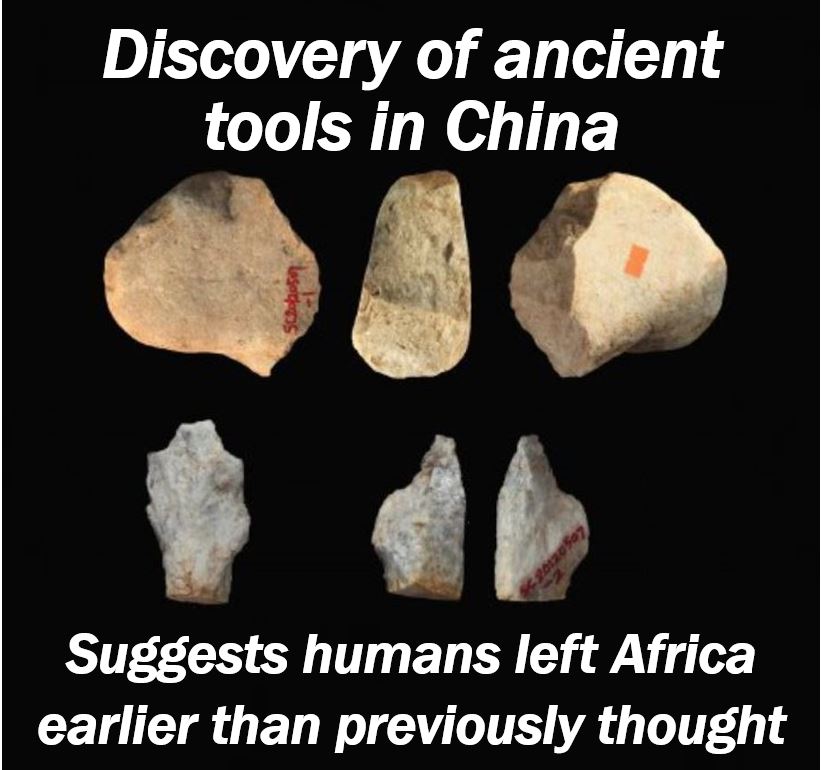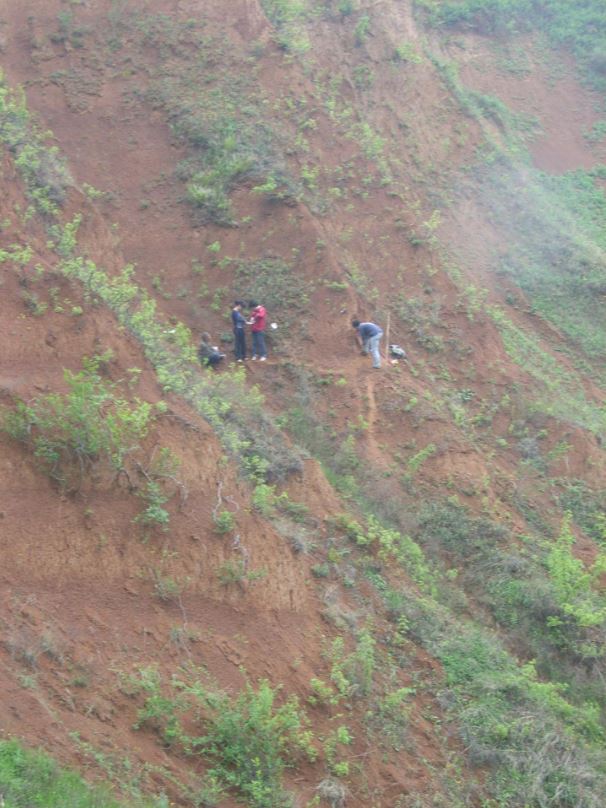A discovery of prehistoric tools in China suggests that ancient humans left Africa much earlier than scientists had thought. Archaeologists discovered artifacts that suggest that our earliest human ancestors were in East Asia more than 2,000,000 years ago. The team discovered the tools at Shangchen, a locality in the southern Chinese Loess Plateau ((黄土高原).
Team leader, Professor Zhaoyu Zhu, of the Chinese Academy of Sciences, and colleagues published their findings in Nature (citation at end of article).
The oldest tools are approximately 2.12 million years old. They are c. 270,000 years older than the stone tools from Dmanisi, Georgia.
Put simply; ancient humans were migrating from Africa at least one-quarter of a million years earlier than thought.

Ancient humans used different tools
In Shangchen, ancient humans used scrapers, cobbles, and notches. The archaeologists also found pointed pieces and hammer stones at the site.
All the artifacts show signs of use. The stone, for example, had been deliberately flaked. Most of the tools were made of quartz and quartzite.
The quartz and quartzite most likely came from the foothills of the Qinling Mountains, about 5 to 10 km away.
Team members also found fragments of animal bones about 2.12 million years old.

The Chinese Loess Plateau covers an area of approximately 270,000 square kilometers. Winds have deposited from 100 to 300m of dust, i.e., loess, in the area.
The archaeologists found eighty stone artifacts. Most of them in eleven different layers of fossil soils. The soils had developed in the warm and wet climate.
They also found sixteen items in six layers of loess. The six layers of loess had developed under drier and colder conditions.
These seventeen layers of fossil soils and loess developed over a period spanning nearly 1,000,000 years. Therefore, we now believe that ancient humans occupied the Chinese Loess Plateau between 1.2 and 2.12 million years ago.

Ancient humans – climatic conditions
We also know, that over that period of 1,000,000 years, ancient humans lived in different climatic conditions.
Co-author and team member, Professor Robin Dennell, of Exeter University, said:
“Our discovery means it is necessary now to reconsider the timing of when early humans left Africa.”
In an Abstract preceding the main article in Nature, the authors concluded:
“This discovery implies that hominins left Africa earlier than indicated by the evidence from Dmanisi.”
In another recent study, scientists concluded that our human ancestors came from many parts of Africa, rather than just one.
Citation:
“Hominin occupation of the Chinese Loess Plateau since about 2.1 million years ago,” Zhaoyu Zhu, Robin Dennell, Weiwen Huang, Yi Wu, Shifan Qiu, Shixia Yang, Zhiguo Rao, Yamei Hou, Jiubing Xie, Jiangwei Han & Tingping Ouyang. Nature, July 11th, 2018. DOI: 10.1038/s41586-018-0299-4.
